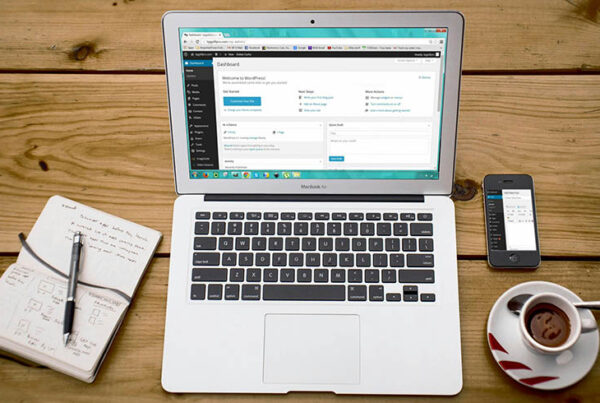Attention spans are shorter than ever, so websites have only a moment to grab a visitor’s attention.
A Microsoft study found that people’s attention spans have dropped to just 8 seconds down from 12 seconds back in 2000. With so much going on online, it is no surprise we get distracted easily. That means when designing websites, it is important to catch people’s attention fast. That is why web design for short attention spans matters more than ever.
Related Articles:

The 3 second rule
These days a lot of people feel like their attention span just isn’t what it used to be. We are living in a world full of distractions. With constant notifications from phones, social media and other screens, it is easy to get distracted. Jumping between apps, messages and tabs makes it harder to focus, even on simple tasks. While some say it is just how things are now, there is growing concern that all this digital multitasking is making it harder for us to concentrate and stay in the moment.
Research shows that if users can’t find what they are looking for within the first 3 seconds on a website, they are likely to leave. But it is not just about finding information. Your site also needs to grab their attention, build trust and clearly show its value from the start. That means your website needs to deliver a clear, smooth experience right away to keep them engaged.
How to design for short attention spans
With attention spans this short, web design for attention spans means websites need to clearly show what they offer and keep visitors interested right away. Here are some tips to help your website make a great first impression. Remember, you only have a few seconds to capture attention.

Make your website load quick
We have all been there. You click on a website but it takes forever to load. Most likely, you didn’t stick around. Slow loading is one of the easiest ways to lose visitors before they even get a chance to see your site.
To make your website load faster, start by making your images smaller so they don’t take up too much space. Use reliable web hosting and keep your site simple by avoiding heavy scripts or too many plugins. You can also speed things up by turning on browser caching and using a content delivery network (CDN) to help visitors load your site quickly no matter where they are. Also showing a small loading animation or progress bar while the site loads lets people know something is happening and helps keep them from getting frustrated.
If you want to check how fast your site is, you can use Google’s PageSpeed Insights tool to see what’s slowing it down and how to improve it.
Make a strong first impression
First impressions matter just as much online as they do in real life. Your website’s design, layout and content need to grab attention right away. To achieve this, put extra care into your hero section. It is the first thing people see when your site loads. Use a clear message, a strong call to action and visuals that pull people in. This could be bold text, a image, a short video or subtle animations that add movement. This brings the page to life.
Show key content and CTAs right away
Make sure the most important information and a clear call to action (CTA) are visible as soon as the page loads, without scrolling. When users see what they need and know what to do next, they are more likely to stay and take action. Showing this right from the start helps people quickly understand your site and makes it feel easier to use.
Make your message clear
Use simple and clear words in your web design for attention spans, so visitors can quickly understand what your website is about. Avoid giving too much information at once. Say what matters most in the first few lines and keep your message short and to the point. People usually just skim online, so making your main points pop can grab their attention right away.

Use visuals over text
Since people’s attention spans are pretty short, they often don’t read everything in front of them. Visuals grab their attention more, making it easier to take in information. For kids watching a video or checking out an infographic is way easier than sitting down to read a whole book. Also, more people listen to podcasts or audiobooks than read books about the same thing. That is why when designing a website, it is important to make it simple, visual and quick to understand to keep people’s attention.
Make content easy to scan
To make your content easy to scan, think about visual hierarchy. Use clear headings, subheadings, bullet points, images and spacing to guide the reader’s eye and help them quickly find the information they need. Also pick fonts and colours that make the text easy to read. You can check our article about Understanding visual hierarchy in web design.
Speed up user actions
If people have short attention spans, the best way to keep them happy is to help them get what they want as fast as possible. This can mean adding clear Buy Now buttons on e-commerce sites to skip extra steps, letting shoppers save carts or wish lists for later and encouraging account creation to save critical info and prefill forms. Cut out any unnecessary fields, keep summaries short and tell users upfront how long a video or article will take. Also if your site has longer forms or tasks, let people save their progress so they can pick up right where they left off without losing any work.
Use lazy loading
Most visitors won’t use every feature on your website, and loading everything at once just slows it down. Lazy loading helps by waiting to load things like images until people actually scroll to them. This makes the website feel faster because it is not trying to do everything right away. Without lazy loading, sites with lots of images can become slow and frustrating to use.

Try gamification
Gamification is a smart way to grab people’s attention when you only have a few seconds. Things like rewards, challenges and progress tracking make using your product more fun and keep people coming back. You see this a lot in fitness apps, where users earn badges and compete on leaderboards, as well as in language learning apps, where daily challenges and progress sharing keep motivation high. But it is important to use gamification in a way that actually helps users, not just to keep them hooked.
Conclusion – web design for attention span
If we want people to actually use what we design, we have to think about their attention from the start. That means being intentional about how we guide them, keep things clear and respect their time. Good design isn’t just about looks it is about understanding how people really behave online. There is no one-size-fits-all answer. The tips here are a solid starting point, but the real key is to keep testing, keep learning and stay curious about your users.
Get in touch with us today if you are looking for website redesign UK or building a brand new website. We would love to help!


